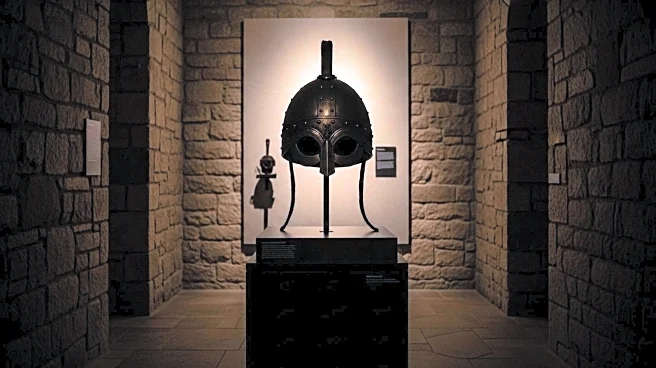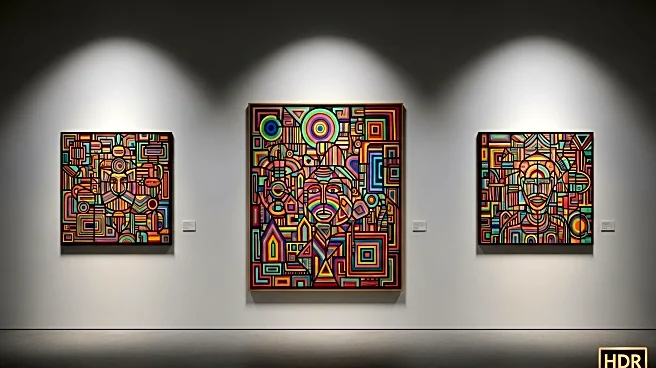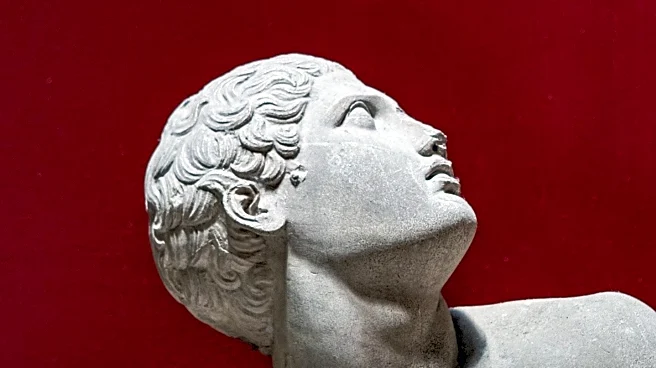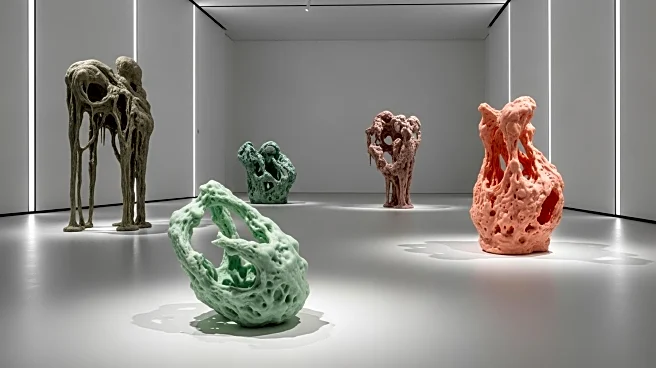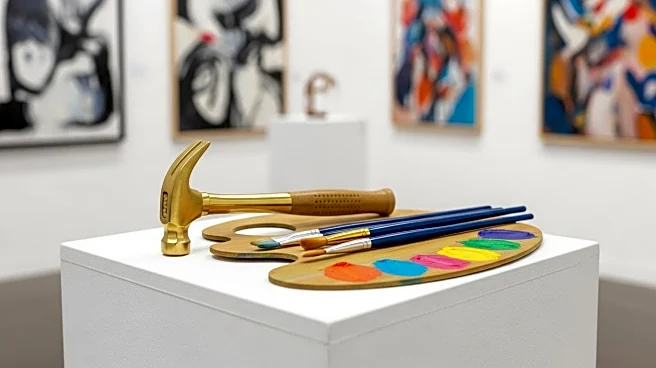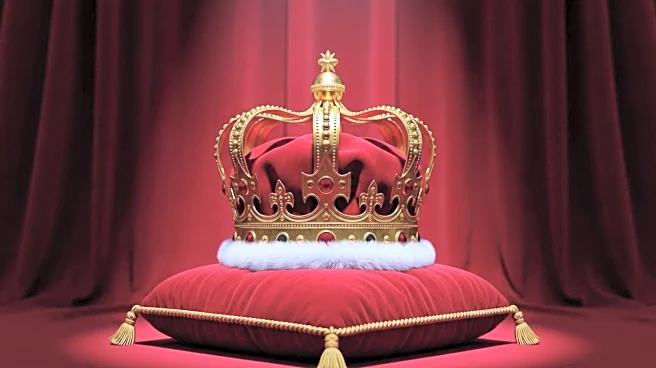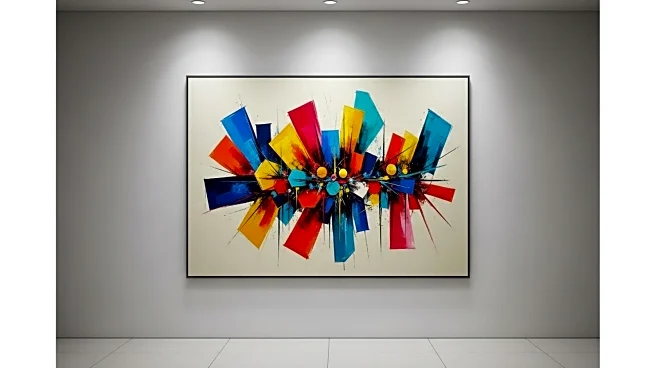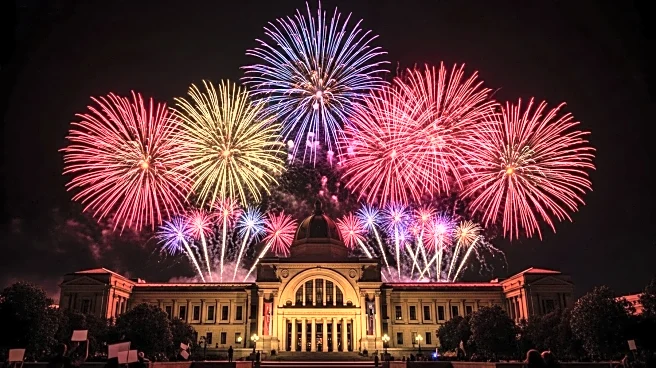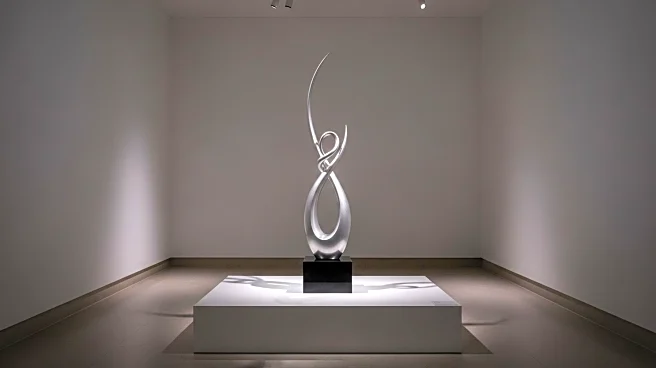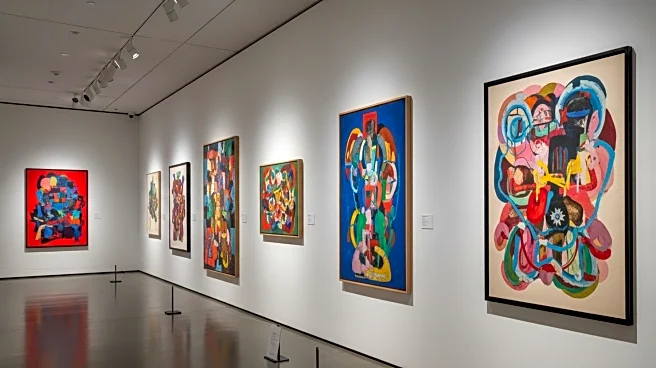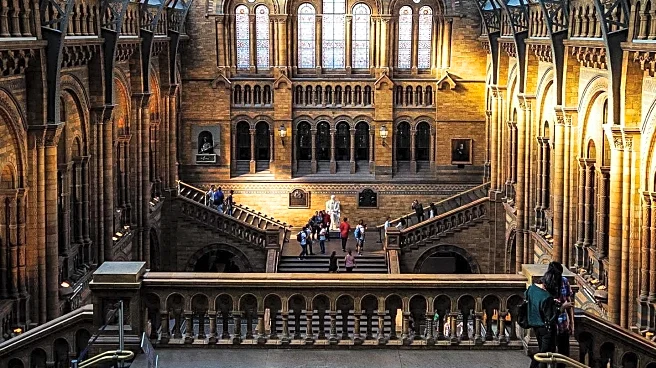What is the story about?
What's Happening?
The British Museum has launched an exhibition titled 'Nordic Noir,' showcasing modern and contemporary Scandinavian graphic art. The exhibition, supported by the AKO Foundation, features 400 examples of Nordic graphics. However, the exhibition has faced criticism for its lack of substance and coherence. While it includes works by notable artists like Edvard Munch, the overall collection is seen as lacking the depth and quality expected from such a prestigious institution. Critics argue that the exhibition fails to maintain a consistent noir theme and question the museum's decision to acquire these works.
Why It's Important?
The exhibition's reception highlights the challenges faced by traditional institutions like the British Museum in balancing historical collections with contemporary art. The criticism underscores the importance of curatorial decisions in maintaining the museum's reputation and relevance. The acquisition of these works raises questions about the museum's long-term strategy and the influence of private foundations like the AKO Foundation in shaping public collections. This situation reflects broader trends in the art world, where the line between commercial and cultural interests is increasingly blurred.
What's Next?
The British Museum may need to reassess its approach to contemporary art exhibitions and acquisitions. The feedback from this exhibition could prompt a review of its curatorial practices and partnerships with private foundations. Future exhibitions might focus on more cohesive themes and higher-quality works to align with the museum's historical prestige. Additionally, the museum might engage with the public and art critics to better understand expectations and improve future offerings.
Beyond the Headlines
The exhibition raises ethical questions about the role of private funding in public institutions. The influence of investment partnerships like the AKO Foundation on cultural heritage could lead to debates about the commercialization of art and the preservation of artistic integrity. This situation may also spark discussions about the responsibility of museums to balance contemporary trends with their educational and cultural missions.
AI Generated Content
Do you find this article useful?
